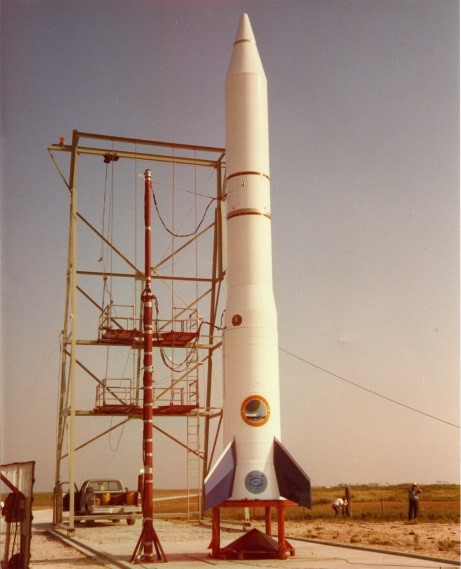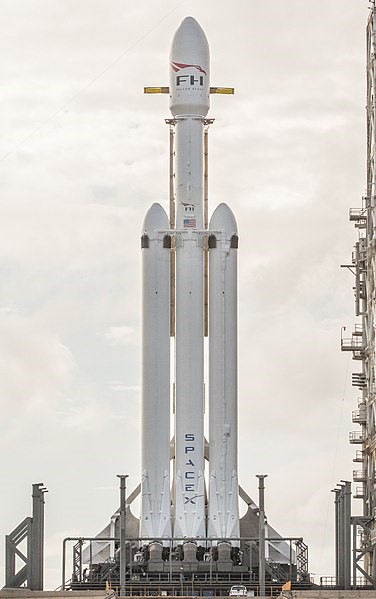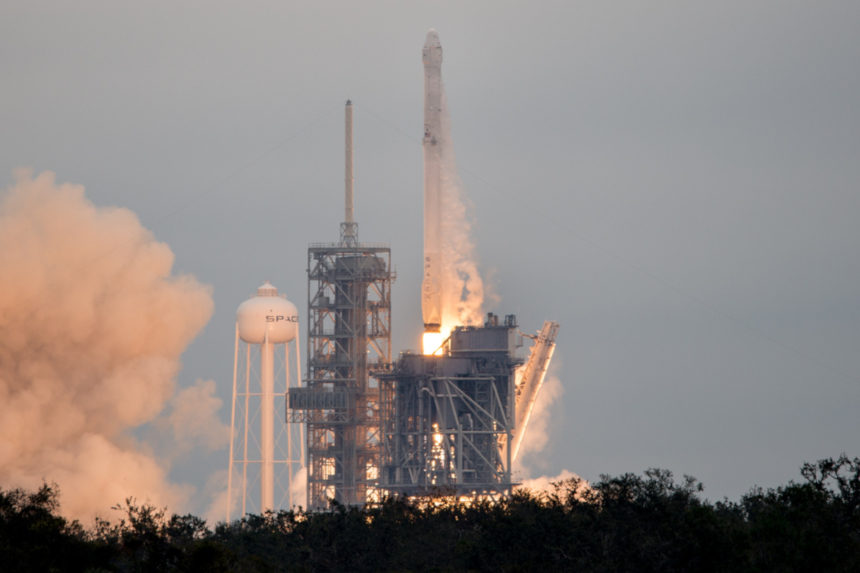Space Exploration Technologies Corporation had a vision: they would make it easier to access outer space. Other companies had tried privately funded space travel before, but no one else had attempted it with an ambitious agenda of cheaper builds, reusable craft, and Mars colonization in the long view. But on September 28, 2008, SpaceX took the first giant leap toward their future with the launch of Falcon 1.
SpaceX founder Elon Musk already had a high business profile when he founded the company in 2002. He and his brother had founded the software company Zip2, , with Musk making $22 million off of its sale in 1999. That same year, Musk co-founded X.com, an online financial company. X.com merged with Confinity, and the company renamed itself after the Confinity product PayPal. In 2002, eBay bought PayPal; Musk’s stock share earned him $165 million in the sale. Musk investigated purchasing refurbished rockets from Russia to attempt his “Mars Oasis” plan of putting a greenhouse on the Red Planet, but ultimately realized it would be cheaper to build the rockets himself. With $100 million of his own money, he founded SpaceX in May of 2002.

There had been other attempts to privately fund and launch rockets in the past. The Conestoga, built by Space Services Incorporated, reached space in 1982, but the series was only launched three times before it was shut down. The Northrop Grumman craft Pegasus used an air-launch strategy where it would be lifted into the air by a plane, and then released mid-air for launch. The first successful Pegasus mission happened in 1990; there have been 42 further launches to date, with another scheduled for October, 2018.
But SpaceX always had a longer view, and the differences in approach and goal would be built into the program. Among the SpaceX priorities was a smaller launch price point with an eye toward using the rocket to position low-Earth-orbit satellites; cheaper delivery was seen as a possible boon to business and development and a profit-center for future partnerships. Falcon would also use liquid fuel, which was a departure from solid-rocket boosters used by NASA on the Space Shuttle. The final design for Falcon made it a two-stage rocket, meaning that one stage, after achieving boost and lift, would separate, allowing the main portion to achieve orbit.
It took $90 million dollars to develop Falcon, and that was the small hurdle. The important thing was making sure it worked. The Department of Defense paid for the first two test launches after development because they were interested in seeing what kind of practical application the system might offer. Flight test one failed after one minute because of a fuel line rupture. The second test had multiple issues, but Musk and his team wrote it up as a success because they were able to determine that 95 percent of the systems in the vehicle worked properly. The third launch in August 2008 failed when, after stage separation, two sections of the rocket hit each other again. At that point, things were financially grim for the venture; the next attempt had to be a success.
SpaceX released this video of Falcon 1 highlights.
The fourth flight came on September 28, 2008. As Musk himself would later say, the future of the company was riding on it. One correction — an increase in the time between the burn-out of the first stage and separation of the second — appeared to have fixed the cause of failure from the third flight. Falcon 1 achieved orbit, placed a non-functioning spacecraft weighing 363 pounds in orbit as well, and completed its mission. The Falcon 1 designation would be used again the following year for a successful July 2009 launch that also included delivery of a vehicular payload into orbit. At the 2017 International Aeronautical Conference, Musk was frank about the need for the fourth flight to succeed; he said, “The first three launches failed. . . [The] fourth launch worked, or that would have been it for SpaceX.”

The legacy of Falcon lives on at SpaceX. Falcon 1 was, according to SpaceX, “the first privately-developed liquid-fueled rocket to successfully reach orbit.” Its success secured a contract with NASA to deliver cargo to the International Space Station, with an original cost of a comparatively affordable $9 million per launch. Today, SpaceX has made their way to the Falcon 9 and Falcon Heavy series; Falcon 9 has had 61 missions, the most recent of which in placed a Telstar 18V communications satellite in orbit earlier this month.
SpaceX hasn’t simply rested on their laurels with Falcon. They’ve continued to push the boundaries of what its possible. They’ve developed the Dragon, a capsule-craft that is capable of carrying either cargo or astronauts; it’s been used in resupply missions for the International Space Station. SpaceX moved sustainability a huge distance forward with their creation of the reusable launch system; this system allows separated boosters to return to Earth under their own power and land for later re-use. The next giant leap for SpaceX will be the BFR, or the Big Falcon Rocket. Scheduled to replace the other series sometime in the 2020s, it will cover all the applications (resupply, human transport, interplanetary movement) and be the most powerful rocket ever created. The BFR would have the capability to satisfy Musk’s dream of Mars; at SXSW in 2013, Musk said, “I’d like to die on Mars, just not on impact.”
While the Mars greenhouse has yet to be conquered, Musk is making good on his vision of cheaper, more frequent spaceflight with reusable components. He currently plans to have a craft orbit the Moon with a civilian on board as part of a “lunar tourism” initiative. During the commission of Falcon development, Musk also had time to found auto manufacturer Tesla in 2003. Whatever direction SpaceX goes in the future, it’s sure to be eagerly observed and imitated.
Unfortunately, the anniversary of Falcon’s success finds Tesla in serious turmoil. On September 27, the Securities and Exchange Commission accused Musk of making false public statements based on a comment that he made on Twitter in early August. According to the SEC, Musk’s tweet, “Am considering taking Tesla private at $420. Funding secured,” constitutes a type of fraud that could mislead investors. Tesla’s directors released a statement that the are “fully confident in Elon, his integrity and his leadership of the company.” Tesla itself is not named as a party in the suit. It will likely take some time for this situation to play out in the courts. No matter the outcome, one thing is certain: Elon Musk has a knack for getting attention.
Featured image: Shutterstock.com
Become a Saturday Evening Post member and enjoy unlimited access. Subscribe now



